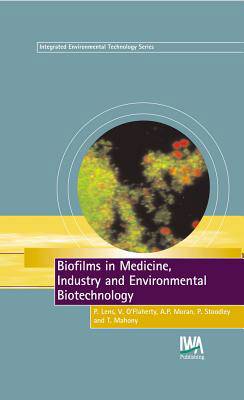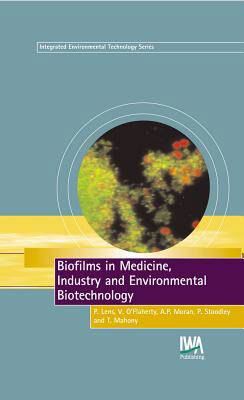
- Afhalen na 1 uur in een winkel met voorraad
- Gratis thuislevering in België vanaf € 30
- Ruim aanbod met 7 miljoen producten
- Afhalen na 1 uur in een winkel met voorraad
- Gratis thuislevering in België vanaf € 30
- Ruim aanbod met 7 miljoen producten
Zoeken
Biofilms in Medicine, Industry and Environmental Biotechnology
Characteristics, Analysis and Control
€ 415,45
+ 830 punten
Omschrijving
Biofilms are of great practical importance for beneficial technologies such as water and wastewater treatment and bioremediation of groundwater and soil. In other settings biofilms cause severe problems, for example in 65% of bacterial infections currently treated by clinicians (particularly those associated with prosthetics and implants), accelerated corrosion in industrial systems, oil souring and biofouling. Until recently, the structure and function of biofilms could only be inferred from gross measures of biomass and metabolic activity. This limitation meant that investigators involved in biofilm research and application had only a crude understanding of the microbial ecology, physical structure and chemical characteristics of biofilms. Consequently, opportunities for the exploitation and control of biofilms were very limited. The past decade has witnessed the development of several new techniques to elucidate the structure and function of biofilms. Examples include: the use of molecular probes that identify different microbes in complex communities as well as their metabolic functions; the use of microsensors that show concentration gradients of key nutrients and chemicals; the use of confocal laser scanning microscopy to describe the physical structure of biofilms and the development of a new generation of mathematical models that allow for the prediction of biofilm structure and function. However, much progress remains to be made in efforts to understand, control and exploit biofilms. This timely book will introduce its readers to the structure and function of biofilms at a fundamental level as determined during the past decade of research, including: Extracellular polymers as the biofilm matrix; Biofilm phenotype (differential gene expression, interspecies signalling); Biofilm ecology; Biofilm monitoring; Resistance of biofilms to antimicrobial agents and Biofilm abatement. Biofilms in Medicine, Industry and Environmental Technology offers a holistic and multi-disciplinary description of the topic, including biofilm formation and composition, but also biofilm monitoring, disinfection and control. All these aspects are presented from three points of views: medical, industrial and environmental biotechnological in a compact, easy to read format.
Specificaties
Betrokkenen
- Uitgeverij:
Inhoud
- Aantal bladzijden:
- 610
- Taal:
- Engels
- Reeks:
Eigenschappen
- Productcode (EAN):
- 9781843390190
- Verschijningsdatum:
- 30/04/2003
- Uitvoering:
- Hardcover
- Formaat:
- Genaaid
- Afmetingen:
- 156 mm x 234 mm
- Gewicht:
- 453 g

Alleen bij Standaard Boekhandel
+ 830 punten op je klantenkaart van Standaard Boekhandel
Beoordelingen
We publiceren alleen reviews die voldoen aan de voorwaarden voor reviews. Bekijk onze voorwaarden voor reviews.










